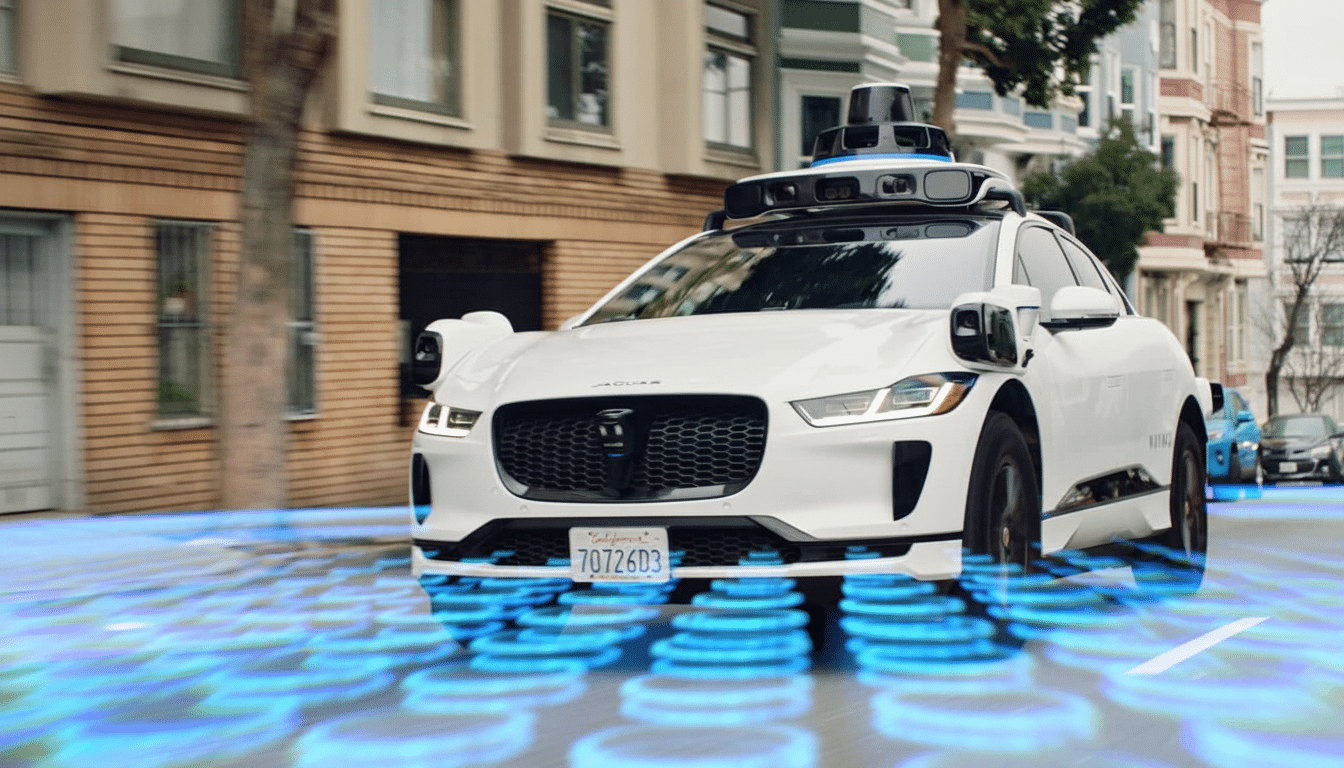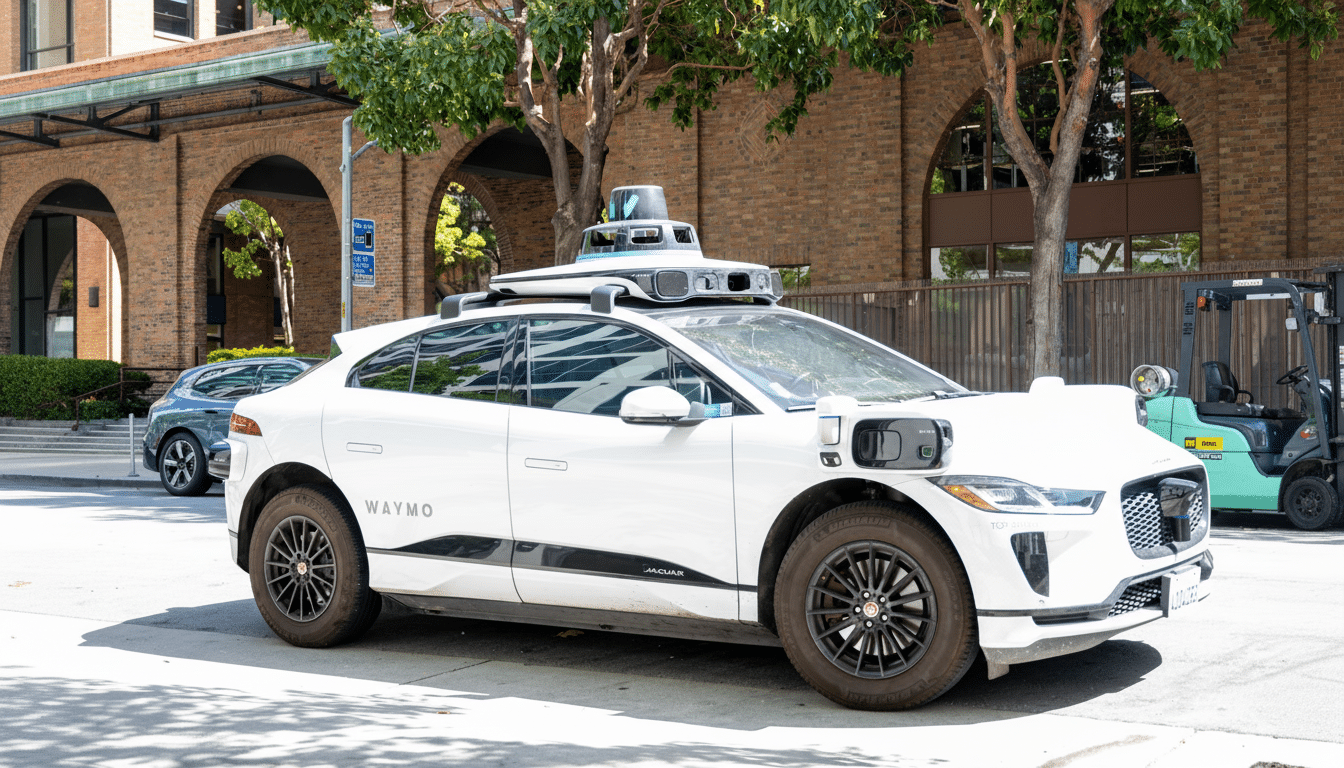Waymo says it intends to introduce fully driverless ride-hailing in London within five years, joining a short list of global cities where the company plans to operate without a human behind the wheel. The Alphabet-owned company will begin with a phased roll-out — initially using Jaguar Land Rover’s all-electric I-PACE vehicle, and its own app for hailing.
The firm has now started trials and safety testing across several London boroughs ahead of the launch. Coverage maps and pricing have not been made public, but Waymo is framing the service for day-to-day trips as well as to serve the millions of visitors who come through the city each year.
- How Waymo plans to launch and expand its London operations
- UK rules and regulators enabling driverless services in London
- Vehicles and autonomous technology powering Waymo in London
- What London riders can expect from Waymo’s driverless taxis
- Waymo’s safety record and regulatory scrutiny in London
- Competitive landscape and economic stakes for driverless taxis
- What to watch next as London trials fully driverless rides

How Waymo plans to launch and expand its London operations
Expect a geofenced service area to start, followed by additional coverage as data on performance accumulates. Waymo generally targets its “operational design domain” to local street rules and conditions, then gradually expands access as reliability increases. It will also require the driving stack to be finely tuned for London’s complicated road mix — narrow streets, roundabouts, bus lanes, and crowded cycle corridors.
London’s Waymo I-PACEs will also be left-hand drive, as with its models in the U.S. Waymo argues that remote operators who help out during tricky, rare edge cases are trained to operate on UK roads and that the lack of a human driver makes the position of the steering wheel less relevant.
UK rules and regulators enabling driverless services in London
The AV Act 2024 set the legal scene for self-driving in Britain with provisions for “no user-in-charge” operation once a system is authorised. The Department for Transport and Centre for Connected and Autonomous Vehicles will review safety cases, with an in-use regulator focusing on operator performance and incident reporting.
Transport for London will also be relevant. Even if the autonomy stack is green-lit at a federal level, operators will still have to comply with local licensing, data-sharing and street access regulations. But first, they’ll have to coordinate with borough councils, the Metropolitan Police and emergency services.
Vehicles and autonomous technology powering Waymo in London
Waymo’s I-PACE fleet utilizes lidar (light detection and ranging), radar, and high-resolution cameras working in tandem with a real-time perception system that can categorize vulnerable road users, read signage, and follow motions across crowded scenes. The company will localise its maps and behaviour models to UK norms — from keep-left traffic and zebra crossings, to junction priority and bus-only gates.
Bad weather is a well-known challenge for self-driving, and it’s in London you most often see the sun glare in sensors. Waymo has been progressively practicing for inclement weather in American cities, but London will be a major test of its all-weather capabilities. Anticipate limited capability during initial phases if outside the validated envelope of the system.
What London riders can expect from Waymo’s driverless taxis
Rides will be requested in the Waymo app, and vehicles unlocked through the rider’s phone. Onboard, audio and visual indications inform passengers of where they are in the journey; externally, sounds and messages communicate intent to pedestrians and cyclists. Waymo uses data from its sensors to analyze safety and to comply with the law; this must be carried out in accordance with UK data protection rules.

Accessibility continues to be a challenge when it comes to robotaxis. The I-PACE’s low step-in means it is not a wheelchair-accessible van. London authorities have been driving private-hire services to focus on accessibility; any longer-term expansion could depend on how accessible the initial fleet is found to be.
Waymo’s safety record and regulatory scrutiny in London
Waymo has logged millions of miles with riders only in U.S. cities, and it has published safety performance analyses comparing its crash rates to human benchmarks, showing reductions in some types of crashes in company reports. Independent checks will be ongoing: in the U.S., federal regulators have looked into cases of driverless cars doing something damaging whilst on a public road, and UK officials will want to see open reporting of incidents and well-defined boundaries about how far these vehicles can go.
In London, Waymo will have to show it can communicate with cyclists, buses and emergency vehicles safely. Working with Transport for London and cycling groups could also inform how the vehicles manage advanced stop lines, bus stop bypasses, and complex junctions where visibility of cyclists is crucial.
Competitive landscape and economic stakes for driverless taxis
Waymo’s shift ensures that London joins a relatively small group of international hot spots for AVs. It also increases pressure on rivals from incumbents experimenting with robotaxis to British autonomy developers such as Oxa focused on logistics and industrial sites. The Jaguar Land Rover machinery provides a domestic industrial link, even though the vehicles are from Waymo’s existing fleet.
If approved at scale, driverless ride-hailing could transform late-night transportation availability, fill gaps in places where traditional taxis don’t serve and generate new operational roles like remote assistance as well as fleet management. But the economics will depend on utilization, maintaining costly sensor suites and the cost of compliance with London’s rigorous regulatory and data standards.
What to watch next as London trials fully driverless rides
Among the major unknowns are the initial service map, fare structure, service hours and how quickly Waymo can scale up from limited pilots to broader availability. The first official safety authorisations under the Automated Vehicles Act will be a game changer and so too will public perception when Londoners start taking journeys without a driver behind the wheel.
For now, the message is obvious: fully driverless rides are coming to London.
The next year will gauge how quickly policy, public trust and engineering coalesce to make that promise work curb to curb.

